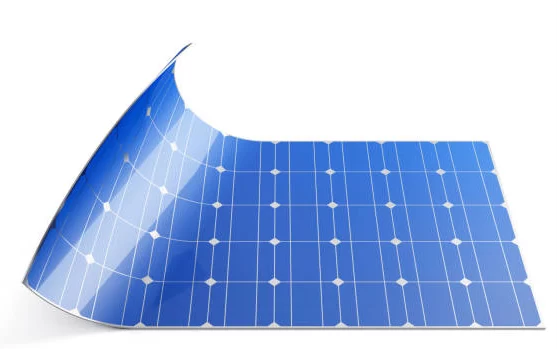The Rise of Flexible Solar Power Generation: A Bright Future Ahead
In the era of sustainable energy, Flexible Solar Power Generation is gaining significant attention. As we look for innovative solutions to combat climate change and reduce our dependence on fossil fuels, flexible solar technology emerges as a promising alternative. But what exactly is flexible solar power generation, and how is it reshaping our energy landscape? Let’s explore!
Understanding Flexible Solar Power Generation
Flexible solar power generation refers to the use of lightweight, bendable solar panels that can be installed in a variety of environments. Unlike traditional solar panels, which are typically rigid and heavy, flexible solar panels are designed to adapt to different surfaces and applications. This flexibility makes them an ideal choice for a wide range of settings, from residential rooftops to portable energy solutions.
Benefits of Flexible Solar Power Generation
- Versatility in Applications
One of the most exciting aspects of flexible solar generation is its versatility. These solar panels can be installed on various surfaces, including rooftops, vehicles, tents, and even clothing. Imagine solar panels that conform to the curves of your car or backpack, providing power on the go! This adaptability allows for innovative designs and solutions that traditional panels simply cannot offer.
- Lightweight and Portable
Flexible solar panels are significantly lighter than their rigid counterparts. This lightweight feature makes them easier to transport and install, which is especially beneficial for outdoor enthusiasts and campers. You can easily roll up a flexible solar panel and take it with you wherever you go, ensuring that you have access to renewable energy no matter the location.
- Enhanced Aesthetic Appeal
Aesthetic considerations are crucial for many homeowners and businesses. Flexible solar generation allows for the integration of solar technology without compromising visual appeal. These panels can be designed to blend seamlessly with buildings, roofs, and other structures, making them an attractive option for those looking to go green without sacrificing style.
- Cost-Effectiveness
As the demand for renewable energy continues to rise, the costs associated with flexible solar power generation are steadily decreasing. Advances in manufacturing processes and materials are making these panels more affordable. This reduction in cost enables more individuals and businesses to invest in solar energy, contributing to a more sustainable future.
- Performance in Various Conditions
Flexible solar panels are designed to perform well in a range of environmental conditions. Whether it’s sunny, cloudy, or rainy, these panels can still generate electricity. This reliability is crucial for users who want a dependable energy source, regardless of the weather.
Challenges Facing Flexible Solar Power Generation
While the benefits are compelling, there are some challenges that flexible solar power generation must overcome.
- Efficiency Concerns
One of the primary challenges is the efficiency of flexible solar panels. While traditional solar panels often have higher efficiency rates, researchers are actively working to improve the performance of flexible options. Ongoing advancements in materials and technology are likely to lead to significant improvements in efficiency in the near future.
- Durability and Longevity
Durability is another area of concern. Traditional solar panels are built to last for 25 years or more, while flexible panels may not yet match that lifespan. However, manufacturers are developing more resilient materials that enhance the durability and longevity of flexible solar panels, making them more competitive over time.
The Future of Flexible Solar Power Generation
The future of flexible solar generation looks promising. As society becomes more conscious of its environmental impact, the demand for innovative energy solutions will only grow. Here are some trends we can expect to see in the coming years:
- Increased Research and Development
With growing interest from both consumers and businesses, we can anticipate increased investment in research and development for flexible solar technology. As more resources are allocated to this area, we are likely to see rapid advancements that enhance efficiency and reduce production costs.
- Smart Technology Integration
The integration of flexible solar panels with smart technology is on the rise. Imagine a smart home system that automatically adjusts energy usage based on the output from your flexible solar panels. This kind of intelligent energy management could optimize energy consumption and maximize savings for homeowners.
- Urban Innovation
Cities around the world are looking for ways to become more sustainable, and flexible solar generation could play a crucial role. From solar-powered bus shelters to building-integrated photovoltaics, urban planners are exploring creative ways to incorporate solar technology into everyday life, transforming cities into energy-efficient environments.
- Global Adoption
As flexible solar technology becomes more widely available, we can expect to see its adoption in various parts of the world, including developing countries. This technology offers an affordable way to access renewable energy, helping to bridge the energy gap in areas with limited infrastructure.
Flexible solar generation is poised to revolutionize the way we think about solar energy. Its versatility, portability, and aesthetic appeal make it an attractive option for both individuals and businesses. While there are challenges to address, the potential benefits are immense, paving the way for a sustainable future.
By embracing flexible solar technology, we can harness the power of the sun in innovative ways, making renewable energy accessible to everyone. As we look ahead, it’s clear that flexible solar generation will play a vital role in creating a cleaner, greener world for generations to come. The future is bright, and it’s flexible!

